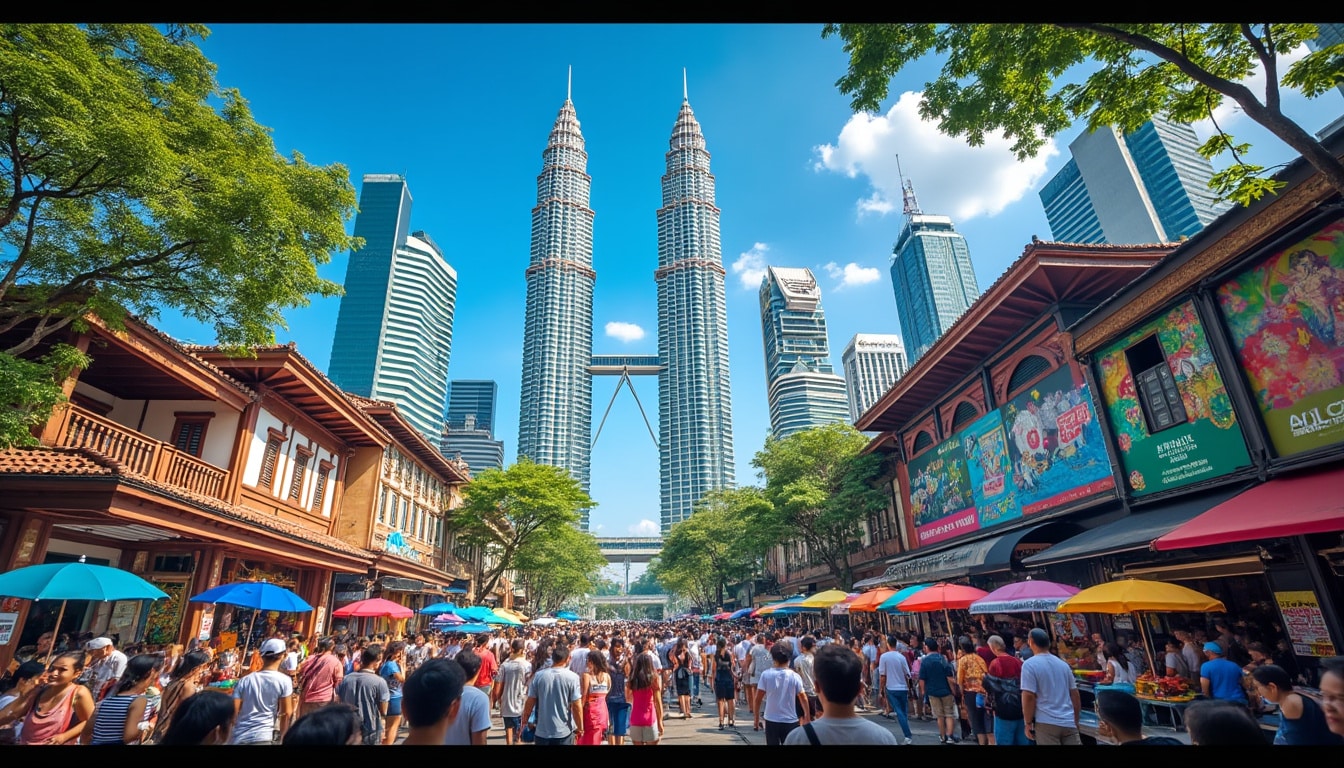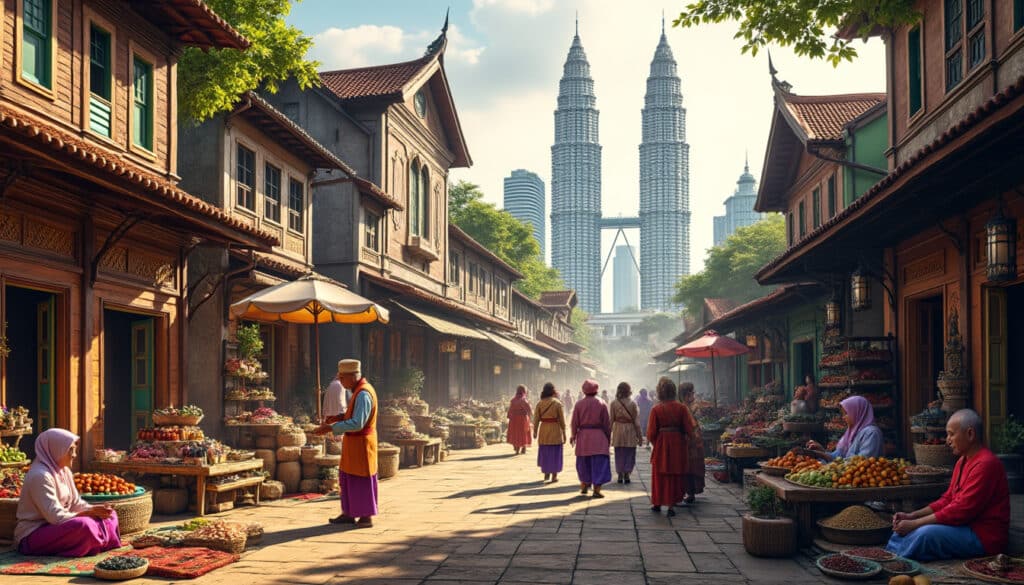Kuala Lumpur, the bustling capital of Malaysia, is renowned for its unique blend of tradition and modernity. Often abbreviated as KL, this vibrant city stands as a testament to Malaysia’s rich cultural heritage and continuous urban development. From its iconic skyscrapers like the Petronas Twin Towers to its historic districts, Kuala Lumpur is a melting pot of cultures, economies, and experiences. It is a place where diverse ethnic groups coexist harmoniously, contributing to the city’s reputation as a hub of multiculturalism and cosmopolitanism. The identity of Kuala Lumpur is intricately woven into its history, cultural practices, and the dynamic urban landscape that marks its existence today.
The Historical Tapestry of Kuala Lumpur
The history of Kuala Lumpur is a captivating tale of transformation, evolving from a humble tin mining settlement in the mid-19th century to the sprawling metropolis it is today. Strategically located at the confluence of the Gombak and Klang rivers, the area quickly became an ideal trading post, attracting settlers from various ethnic backgrounds. These settlers, primarily from Malay, Chinese, and Indian communities, each brought their own distinct cultures, which would ultimately shape the cultural fabric of the city.
One of the critical moments in Kuala Lumpur’s historical journey was its designation as the capital of the newly formed Federation of Malaya in 1957, marking the city’s central role in Malaysia’s path to independence. Landmarks like the Sultan Abdul Samad Building and Merdeka Square stand as witnesses to these historic times. These sites, alongside other cultural institutions such as the National Museum, offer a glimpse into the city’s past and symbolize the endurance and evolution of its cultural identity.
Kuala Lumpur’s rich history is celebrated through various cultural festivals, such as Thaipusam, Chinese New Year, and Hari Raya Aidilfitri. These festivals are not only significant cultural milestones but also represent the city’s spirit of unity and diversity. The traditions of each community are openly displayed, adding layers to the city’s multicultural identity.
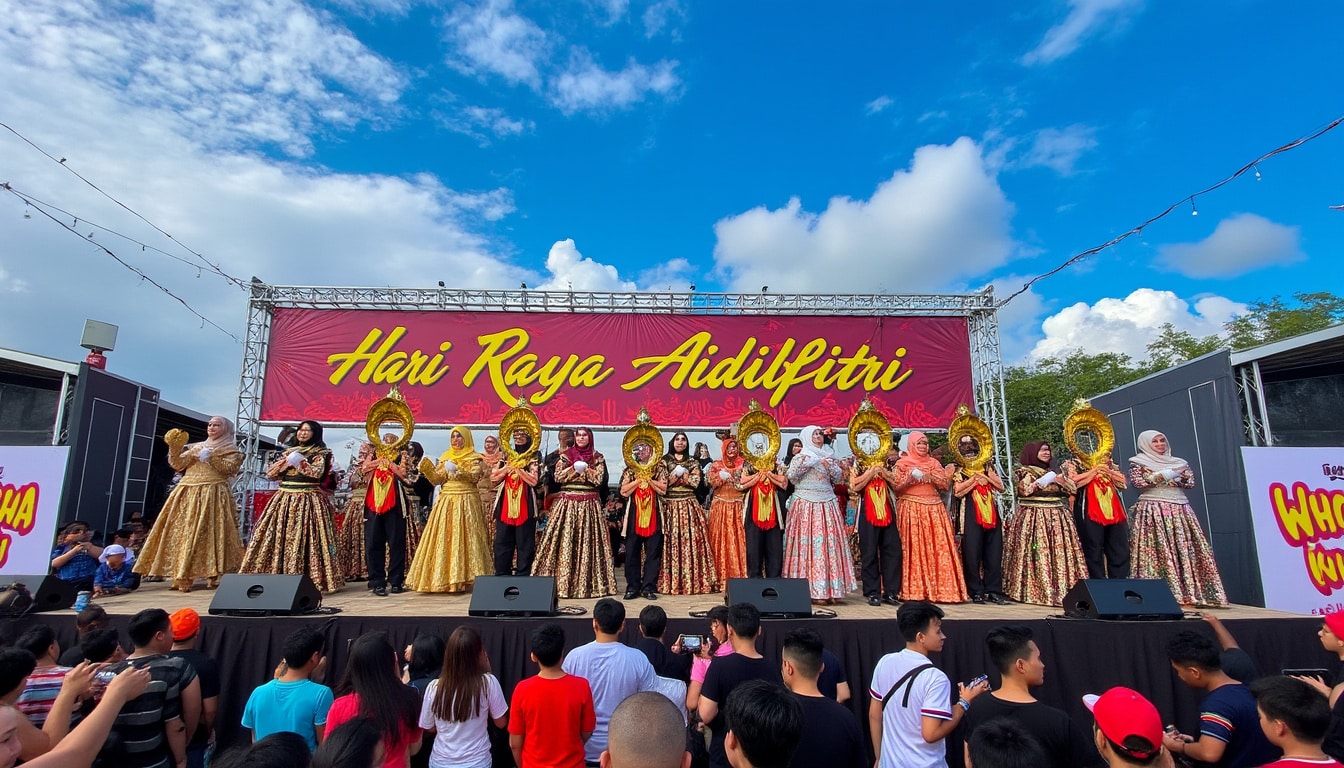
The Role of Architecture in Shaping Identity
Architecture plays a pivotal role in defining a city’s identity, and Kuala Lumpur is no exception. Architectural landmarks such as the KL Towers and the Islamic-inspired designs of the National Mosque demonstrate the fusion of modern innovation and cultural heritage. The skyline, dominated by the Petronas Twin Towers, is a symbol of Malaysia’s economic progress and is a major attraction for tourists.
However, the architectural narrative of Kuala Lumpur is not limited to contemporary designs. The cityscape is dotted with colonial-era buildings and traditional shophouses in areas like Chinatown. This blend of architectural styles forms a visual representation of the historical layers that make up the city’s identity. These structures offer a tangible connection to Kuala Lumpur’s past, making them invaluable parts of the city’s landscape.
Cultural Diversity and Its Celebration
The heart of Kuala Lumpur’s identity lies in its cultural diversity. The city is home to a myriad of ethnic groups, including Malays, Chinese, and Indians, each contributing to the city’s unique cultural mosaic. The integration of various cultures is evident in everyday life, from the streets lined with diverse food stalls to the sound of different languages echoing through the bustling markets.
The Chinese culture in Kuala Lumpur is prominently celebrated in Chinatown, where traditional festivals, culinary specialties like dim sum, and intricate Chinese temples are integral aspects. Similarly, the Indian influence can be felt in vibrant districts like Brickfields, known as Little India, where colorful sarees and the aroma of spices define the streetscape.
A fundamental aspect of embracing this diversity is the multitude of festivals celebrated within the city. Festivals such as Deepavali, the Festival of Lights, and the Chinese New Year are celebrated with immense enthusiasm, bringing together people from all walks of life. These celebrations are not just about cultural preservation but also about promoting a harmonious coexistence among the city’s diverse populace.
Influence of Major Cultural Landmarks
Cultural landmarks like the Islamic Arts Museum and the Kuala Lumpur Performing Arts Centre highlight the city’s dedication to preserving and showcasing its rich heritage. These institutions serve as centers for cultural exchange and education, offering residents and visitors alike the opportunity to engage with Kuala Lumpur’s vibrant history and dynamic culture.
Economic Powerhouses Impacting Kuala Lumpur’s Identity
As the political and economic heart of Malaysia, Kuala Lumpur plays a significant role in shaping the nation’s economic policies. The city is a hub for many multinational corporations and local businesses, which contribute to its reputation as a global city. Malaysia Airlines and the Berjaya Group are among the major players headquartered in Kuala Lumpur, furthering its stature on the international stage.
Additionally, the telecommunications giants like Digi Telecommunications and Maxis shape the city’s modern identity through cutting-edge technology and communication infrastructure. These companies not only boost the local economy but also attract a skilled workforce, contributing to the city’s status as a thriving metropolis.
- 🏙️ The Gardens Mall serves as a shopping haven for both locals and tourists.
- 🎢 Extensive developments by the Sunway Group showcase the city’s drive towards modernity.
- ✈️ KLIA stands as a notable entry point, facilitating global connectivity.
The presence of these economic powerhouses aligns with Kuala Lumpur’s image as a center of commerce and innovation. Moreover, initiatives in urban sustainability and infrastructure enhancements are prioritized to ensure that the city’s development is both inclusive and environmentally conscious.
Kuala Lumpur’s Dynamic Political Scene
Kuala Lumpur’s political landscape is shaped by its role as the national capital, where major political movements and decisions take place. Governed under the Kuala Lumpur City Hall and the Federal Territories Ministry, the city boasts a governance structure that strives for transparency and civic engagement.
Recent political trends emphasize urban sustainability, with policies focusing on green initiatives and public transportation improvements. Projects such as enhanced rail networks and sustainable urban developments reflect the city’s commitment to maintaining its status as a global city while prioritizing quality of life for its residents.
| Political Aspect | Description | Emoji |
|---|---|---|
| Voter Turnout | Approximately 75% of eligible voters participate in elections. | 🗳️ |
| City Governance | Managed by Kuala Lumpur City Hall. | 🏛️ |
| Recent Initiatives | Decentralization and increased local governance. | 🌍 |
Politically, Kuala Lumpur remains a hotspot for discussions around economic growth, sustainability, and inclusivity. The city’s dynamic political stance under lines its crucial role in influencing national policies and reflects the aspirations of its diverse population.
Weather Patterns and Their Impact on Quality of Life
Kuala Lumpur experiences a tropical rainforest climate with consistent high temperatures and humidity levels, contributing to its lush and green environment. The city does not have the four distinct seasons but rather a division between wet and dry periods, typical of tropical climates.
The wettest months typically include November, characterized by heavy monsoon rains leading to occasional flooding. During the dry spells, the city enjoys clear skies which provide the perfect backdrop against which the impressive skyline, including the Petronas Towers, stands tall.
- 🌧️ High rainfall in November, with around 11 inches (280mm).
- ☀️ Consistently high temperatures averaging 32°C (90°F).
- 🌬️ High humidity levels exceeding 80% throughout the year.
The climatic conditions in Kuala Lumpur, while presenting certain challenges, also contribute significantly to the city’s charm. The lush surroundings and verdant cityscape often provide an escape from urban life, with parks and gardens dotted throughout the city. Residents and visitors can explore beautiful natural attractions like the Perdana Botanical Gardens or seek solace at the Kuala Lumpur Bird Park.
Explore Kuala Lumpur’s Monthly Weather
Impact on Day-to-Day Life
The weather patterns greatly impact daily activities in Kuala Lumpur, influencing everything from attire choices to the types of recreational activities available. Businesses are often responsive to seasonal shifts, offering adapted services to ensure comfort and convenience for both residents and tourists. With high humidity and consistent warmth, outdoor dining, al fresco events, and night markets thrive, fostering a vibrant social atmosphere that is a hallmark of the city.
Overall, understanding the climate of Kuala Lumpur and its seasonal shifts is essential for anyone looking to explore or settle in this dynamic city. While the heat and humidity might be overwhelming for some, the endless opportunities for exploration and cultural immersion offer endless rewards.
Frequently Asked Questions About Kuala Lumpur
- What is Kuala Lumpur famous for? Kuala Lumpur is renowned for its diverse cultural heritage, iconic landmarks like the Petronas Twin Towers, vibrant culinary scene, and its role as the political and economic heart of Malaysia.
- What is the best time to visit Kuala Lumpur? While Kuala Lumpur is a year-round destination, visiting during the dry months between May and July can offer more opportunity for outdoor activities without the interruption of tropical downpours.
- How does Kuala Lumpur’s transport infrastructure facilitate exploration? Kuala Lumpur boasts an extensive and efficient transport network, including light rail transit, buses, and the well-connected Kuala Lumpur International Airport (KLIA), making travel within the city and beyond convenient.
Kuala Lumpur remains a city of profound contrasts and vibrant energies, where history and progress coexist seamlessly. Whether exploring its eclectic neighborhoods or marveling at its architectural wonders, the city promises an unforgettable experience enriched by its cultural vibrancy and dynamic identity.
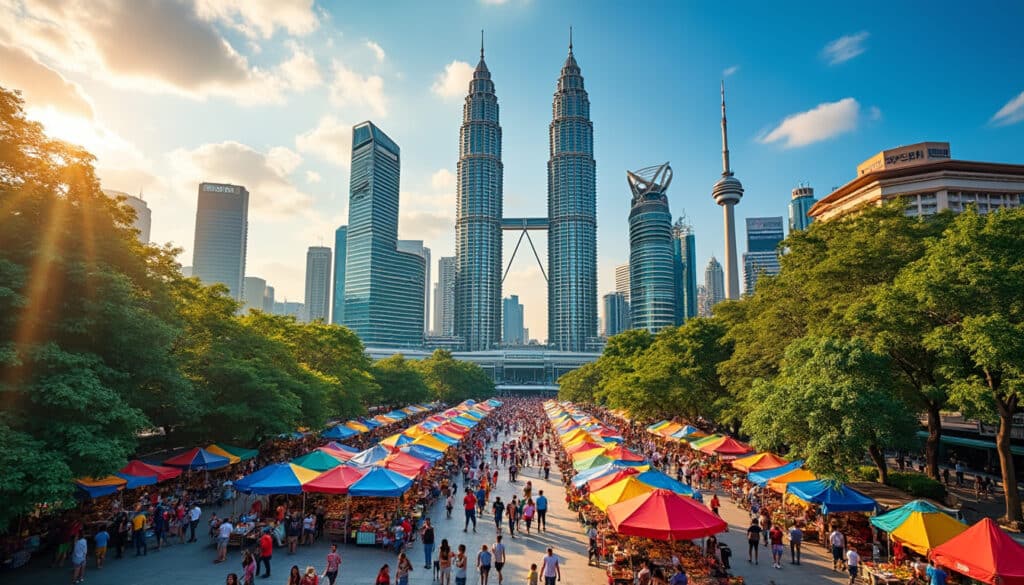
Fun Facts & Curiosities About Kuala Lumpur
Welcome to the multifaceted world of Kuala Lumpur, a city that captivates with its vibrant cultural tapestry and awe-inspiring landmarks. Known for the towering Petronas Twin Towers and its bustling street food scene, Kuala Lumpur stands as a testament to…

Architecture and urban features of Kuala Lumpur
Kuala Lumpur, a vibrant metropolis, stands as a testament to the harmonious blend of history, culture, and modernity. The cityscape is elegantly punctuated by towering skyscrapers, each reflecting the diverse tapestry of influences that have shaped the city’s architectural marvels.…
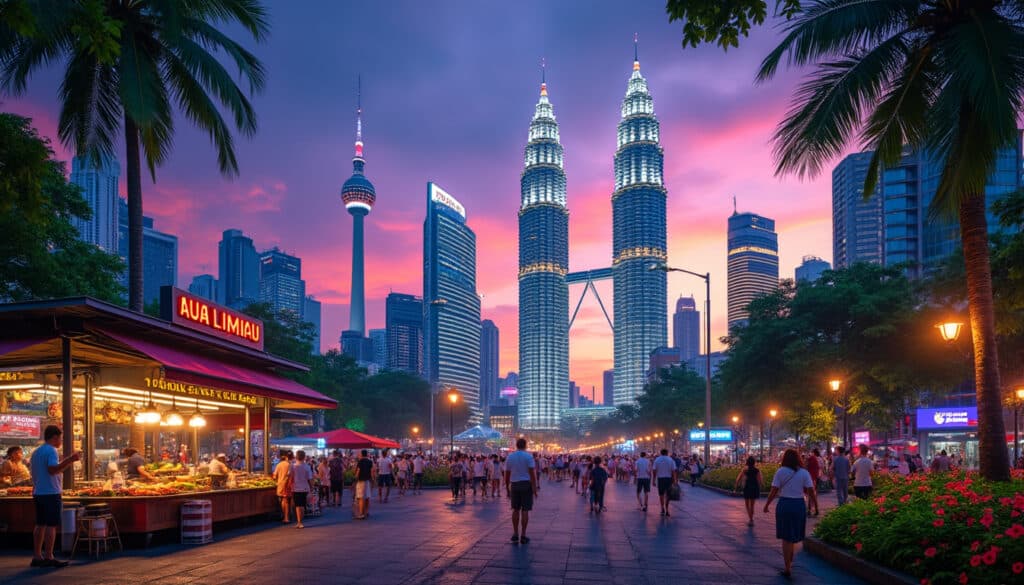
Basic facts about Kuala Lumpur
Kuala Lumpur, a vibrant metropolis and the capital city of Malaysia, is not just a hub of culture and commerce but a melting pot of tradition and modernity. With towering skyscrapers like the Petronas Twin Towers and the historical Batu…
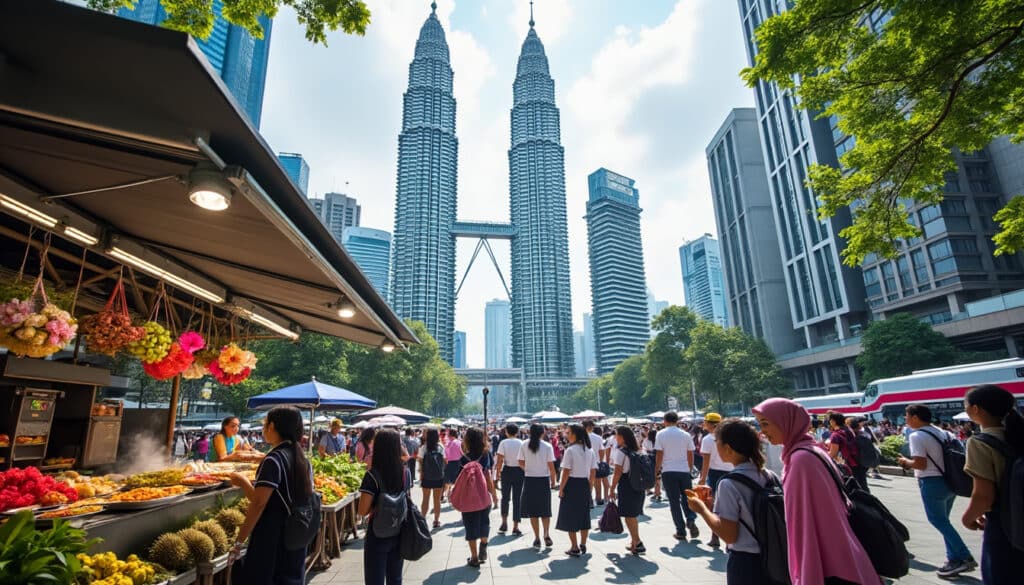
For those considering a move to vibrant Southeast Asia, Kuala Lumpur, affectionately known as “KL,” presents itself as a captivating blend of modernity and tradition. As the heart of Malaysia, this bustling metropolis offers an enticing mix of cultural diversity,…
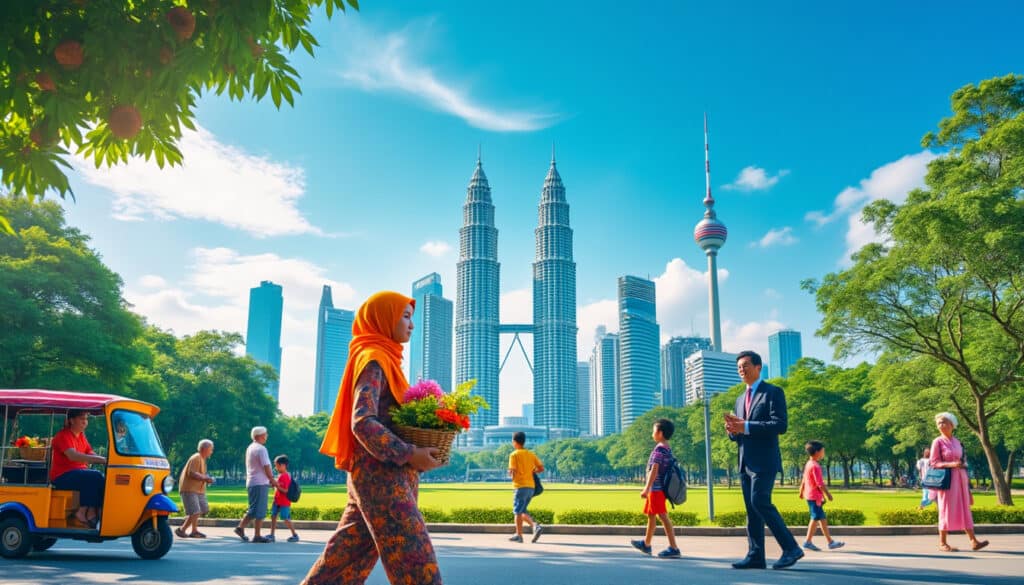
Demographics and geography of Kuala Lumpur
The demographics and geography of Kuala Lumpur present a vivid tapestry of cultures and landscapes, shaping this vibrant capital city of Malaysia. Renowned for its cultural diversity, Kuala Lumpur, or simply “KL”, stands as a beacon of Malaysia’s rich history…
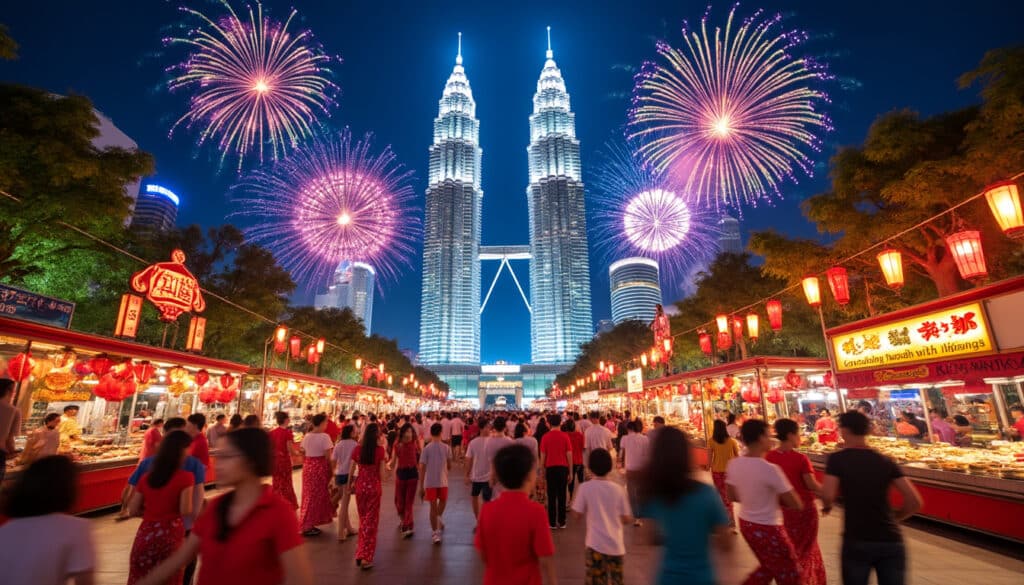
Holidays and celebrations in Kuala Lumpur
Kuala Lumpur is a city renowned for its vibrant celebrations and rich cultural tapestry. As the heartbeat of Malaysia, it hosts a plethora of holidays and festivities that attract both locals and visitors alike. With its diverse blend of Malay,…

Language and spelling of Kuala Lumpur
Dive into the bustling streets of Kuala Lumpur, and you’re engulfed in a symphony of languages reflecting the city’s rich multicultural tapestry. From the austere Bahasa Melayu to the vibrant chimes of Mandarin, each language contributes distinctively to the fabric…
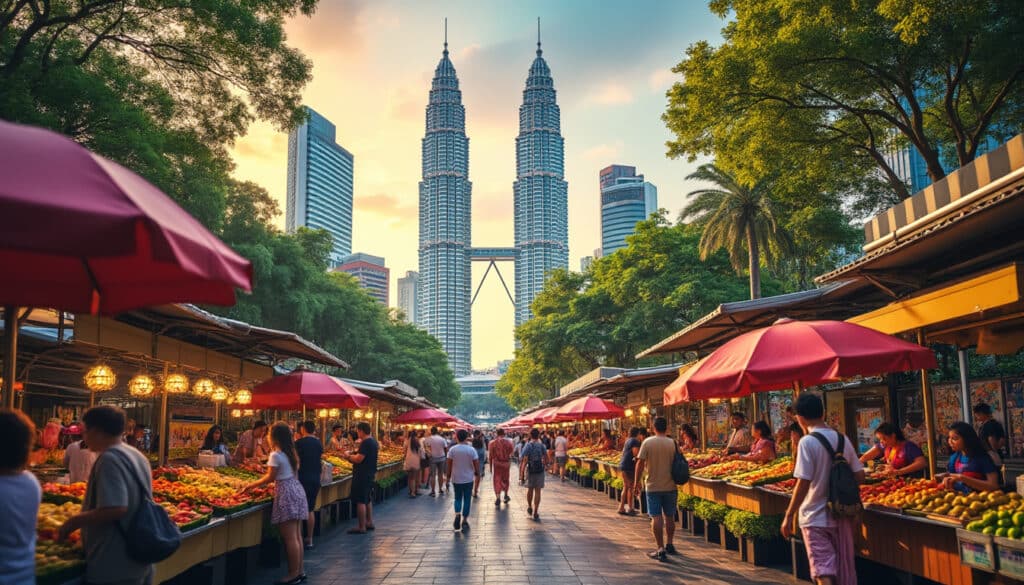
Local tips for tourists in Kuala Lumpur
Visiting Kuala Lumpur offers a unique blend of cultural diversity, vibrant city life, and historical richness. Whether exploring bustling markets, savoring local delicacies, or marveling at impressive landmarks, visitors will find an abundance of experiences. Embrace the city’s warmth and…
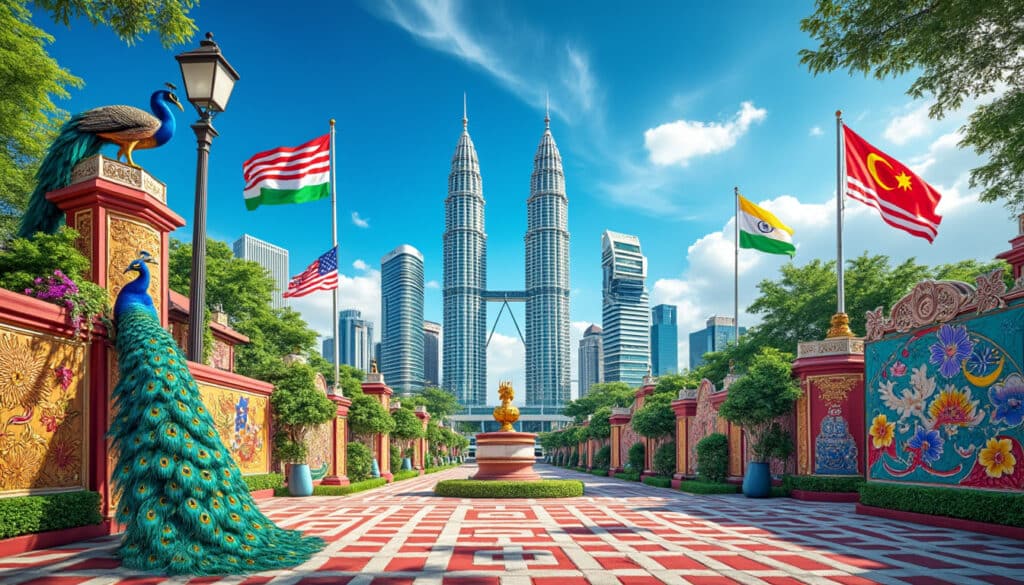
Names, flags, and identity of Kuala Lumpur
The vibrant city of Kuala Lumpur is a melting pot of cultural nuances, intricate flags, and a rich tapestry of identities that reflects its journey from a small tin-mining settlement to a bustling metropolis. As you walk through its streets,…

Time and time zone in Kuala Lumpur
Kuala Lumpur, Malaysia’s bustling capital, is not just a hub of vibrant culture and bustling street life; it is also a city intricately connected to its time zone, Maritime Time (MYT). Nestled in the GMT+8 zone, Kuala Lumpur lives by…
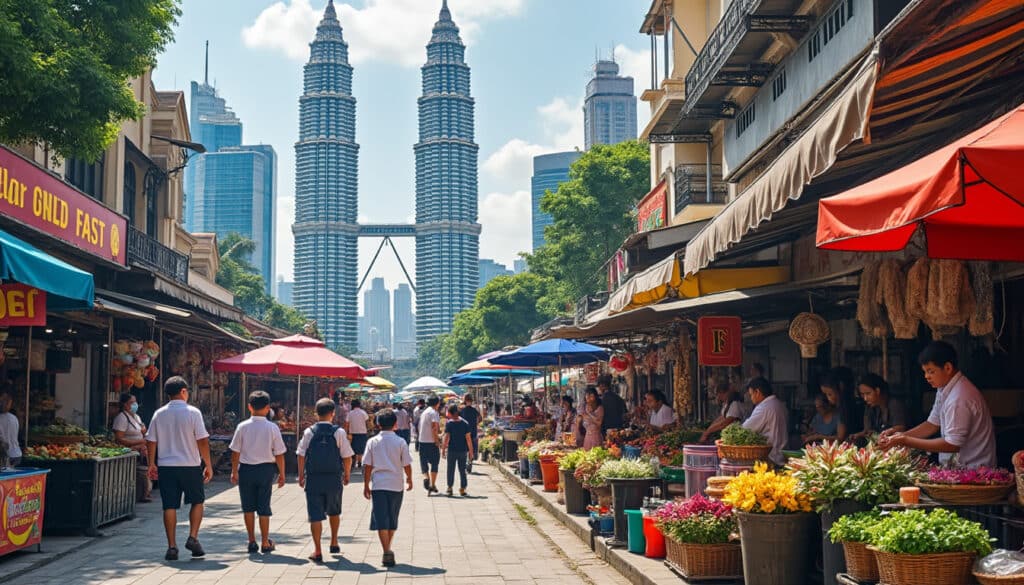
Unusual facts and social issues in Kuala Lumpur
Nestled in the heart of Malaysia, Kuala Lumpur is a city of contrasts, where the ancient mingles with the ultra-modern and diverse cultures blend seamlessly. Known for its iconic Petronas Twin Towers, bustling street markets, and vibrant nightlife, the city…
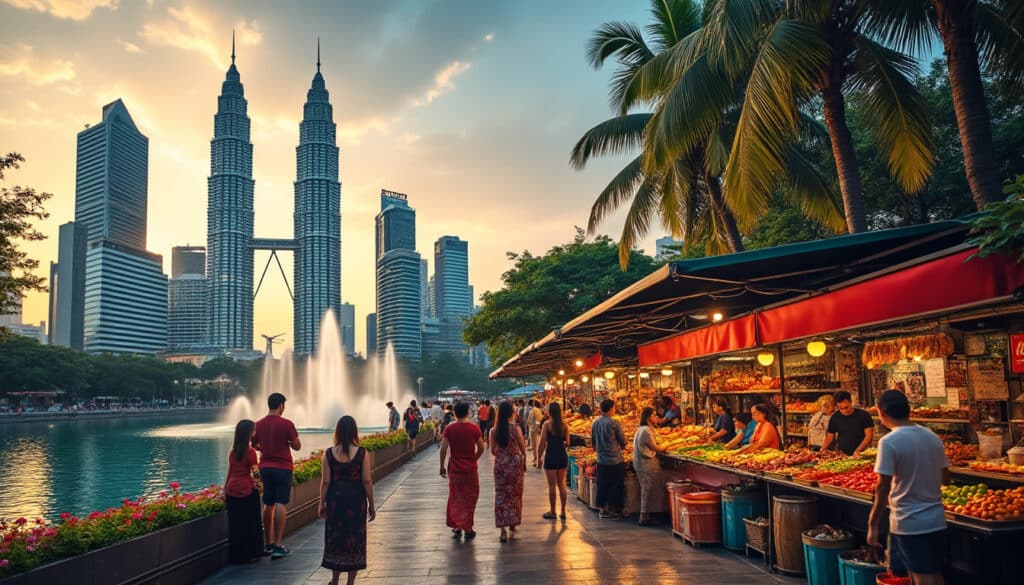
What does Kuala Lumpur look, smell, feel like?
Nestled between the hustle of thriving city life and the whispers of heritage that sing through its landmarks, Kuala Lumpur is a sensory tapestry that invites exploration. Whether you’re wandering through hidden alleyways or soaking in the skyline from afar,…

